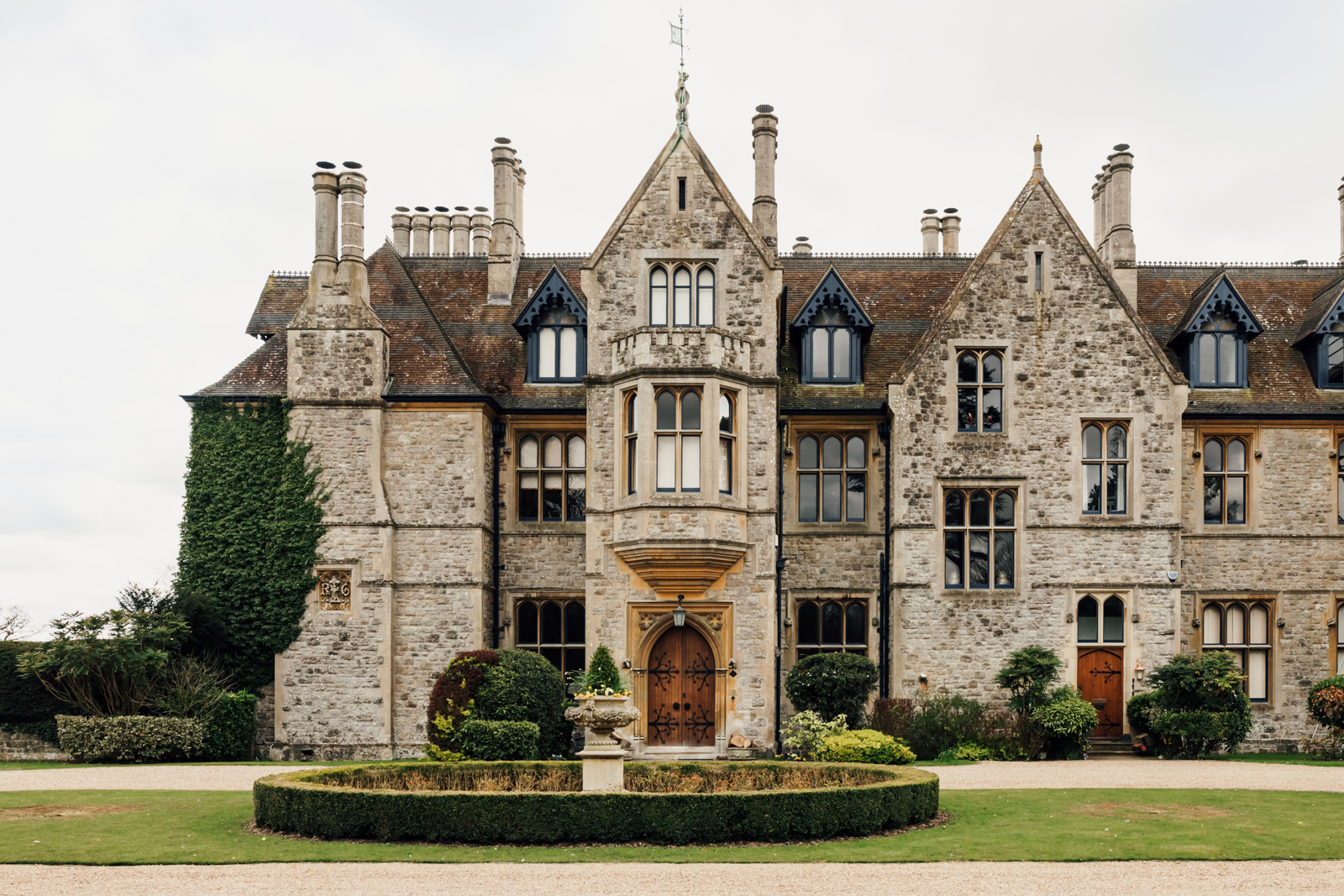The Grand Tour
The house is approached via a long driveway, winding through mature parkland with a commanding view of the surrounding countryside. Entry on the ground floor leads to a formal hall, where wooden panelling with a dado rail lines the walls and checkerboard tiles run underfoot. To the left is a guest cloakroom with a plant cupboard behind.
A living room of tremendous proportions sits at the rear of the plan, where gothic arched fenestration extends across the southern façade and bathes the space in light. An original fireplace with a wood and marble surround is the focal point of the room; this was installed at the time of construction by specialists W. H. Burke & Co. The heavily moulded ceiling has classical cornicing and strapwork, drawing influence from the Tudor and Jacobean periods, and lends the space an air of subtle splendour.
Between the ground and first floors is a mezzanine level, home to a dramatic dining room that overlooks the living room below. To the front of the plan on this floor is a kitchen with granite work surfaces, which overlooks the entrance hall. On the second floor is the main bedroom suite. This is a south-facing room with far-reaching views over the surrounding landscape and has an en suite and dressing room space. To the front is another bedroom, also with an en suite.
A large lightwell illuminates the staircase leading up to the third floor. Here, a family bathroom has been decorated in the Edwardian style, replete with a roll-top bath and checkerboard tiling. Two bedrooms lie to the rear, both of which are south-facing and have direct access to the sizeable sun terrace; one of the bedrooms also has extensive fitted storage.
The Great Outdoors
Hassobury Manor sits in the centre of parkland with
gardens extending to the south of the house. To the rear, a large stone terrace provides the perfect spot for outdoor dining. Beyond the terrace, steps lead down to a large, communal, flat, croquet lawn bordered by a ha-ha, which divides the domestic grounds from the surrounding parkland. A network of footpaths and bridleways connects the house to extensive walks into ancient woodland and local villages. A duckpond cared for by the residents serves as a community hub.
Out and About
The Gosling is situated a short walk cross country from the historic villages of Manuden which has an Ofsted certified “outstanding” primary school and a bustling local pub. The larger Bishop’s Stortford, eight minutes away, has five “outstanding” secondary schools and the independent Bishop’s Stortford College. The historic market town is popular for its attractive architecture and brilliant transport links to London. It has a broad range of shops, restaurants and pubs. The perennially popular market town of Saffron Walden is under 30 minutes by car and Cambridge is a 45-minute journey.
Bishop’s Stortford train station is approximately 10 minutes drive from Hassobury Manor and runs as many as seven services per hour to London Liverpool Street in as little as 38 minutes. Tottenham Hale is en route to London on this line and provides a convenient link to the Victoria Line. The M11 runs close to the town, giving access to London, Cambridge, Stansted Airport and the M25.
